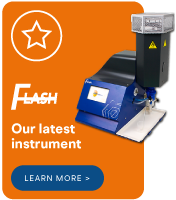Kirkton, A.H. & Pearson, A.M., ‘Comparison of Methods of Measuring Potassium in Pork and Lamb and Prediction of Their Composition from Sodium and Potassium’, J. Anim Sci, 22, (1963), p.125-131. AA Perkin. (1996). Analytical Methods for Atomic Absorptions Spectroscopy. page 30.
Several different techniques can be used for sample digestion and extraction of sodium and/or potassium: oven ashing, perchloric acid ashing, extraction by boiling and acidification with HNO3 as well as extraction by homogenisation in 2% trichloroacetic acid (TCA).
Results of this investigation indicated that the TCA extraction method was repeatable and simple. The recovery of known amounts of potassium showed the method to be accurate.
The results for sodium showed more variability and gave a value lower than expected by about 5%. The amount of potassium found in pork and lamb ranged between 1750 and 3070ppm and the amount of sodium to be between 350 and 700 ppm.
Procedure
All solutions are prepared using deionised distilled water unless prompted otherwise.
A sample weighing between 1.5 and 3.5grams of tissue is homogenised in 150ml of 2% trichloroacetic acid (TCA), then shaken well and stored overnight at 5ºC in a sealable polypropylene container to avoid sodium plating out onto glassware.
The homogenised sample is filtered through Whatman number 40 filter paper into clean polyethylene bottles.
A 5ml aliquot of the sample is made up to 15ml with 2% TCA. This solution is then used for sodium and potassium determination.
Standards are then made for both sodium and potassium around the expected result. If unsure about the range in which the sample will be read at, the BWB Technology offers a single calibration point analysis. This can then be used to estimate an expected range of results and calibrated after this initial estimation of sample.
Standards should be aspirated in order of lowest to highest to avoid previously ran standards contaminating the further calibration standards. It should also be noted that it is of vital importance that further sample dilution is required if the concentration is coming out at over 100ppm. Whilst the BWB Flame Photometer is able to detect ion concentrations over 100ppm, interference begins to become significant in the readings over 100ppm as well as matter being deposited onto the nebuliser array which can be released in later aspirations increasing signal noise and data stability.
When Calibrating, all standard solutions should be made up with 2% TCA solution as well as a solution of 2% TCA ran as a blank to reduce chemical interferences. The blank can be run when prompted on the full range of BWB flame photometers.
Chemical interference for sodium readings can be reduced by neutralising the solution with a few drops of base solution, however it should be taken into consideration that the base selected for neutralisation should not contain any ions that can contaminate readings. If a base is used to neutralise the solution it should be added to all standards and blanks in equal proportion.



